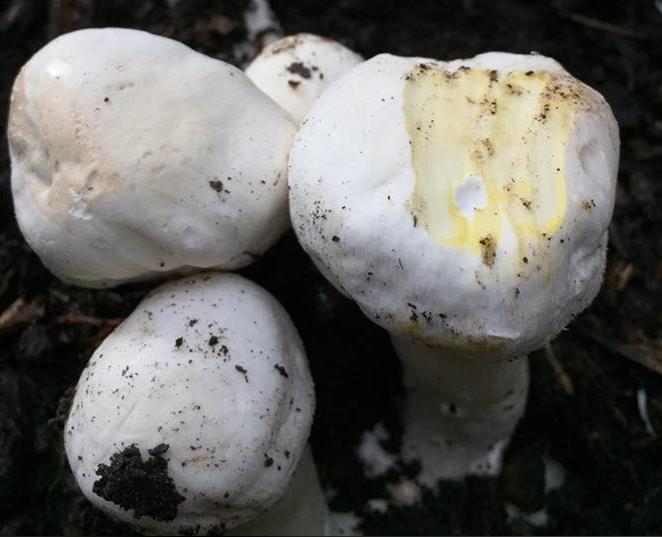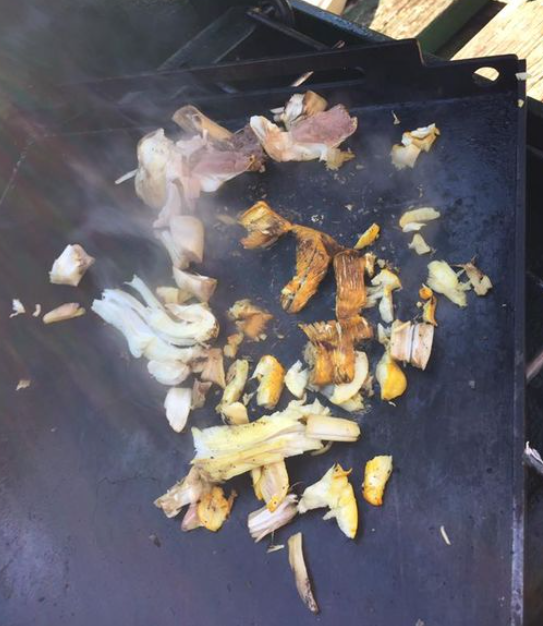Agaricus xanthodermus
Yellow Stainer
Toxic
Young Agaricus xanthodermus (Yellow stainer)
Agaricus xanthodermus gills
Agaricus xanthodermus colour change when cooked. This was part of a demonstration at one of my workshops
Agaricus xanthodermus
Edibility (NOT EDIBLE)
Some people can eat this mushroom without ill effects, for those that do have a reaction it can cause serious gastric problems. Symptoms include sweating, flushing, severe stomach cramps nausea, vomiting and diarrhoea this may even mean hospitalisation in severe cases.
One chemical that is contained in this mushroom is a concentration of phenol, this has been found to be high enough to account for the toxicity of the mushroom and should also act as a deterrent regardless if some people can eat this without ill effect . Its smell is distinctive when cut,bruised or crushed and has been described as phenolic (due to the phenol) and is intensified when cooked turning even more yellow .(see picture attached)
So it really isn’t worth the risk,
Habitat
This mushroom can be found in rotting leaves and also out in the open often in parks, roadside verges, ovals and backyards.
Description
This another mushroom whose names comes together perfectly.
Agaricus is from the Greek agarikon meaning ‘tree fungus’.
The xanthodermus is derived from the Ancient Greek words for "yellow" and "skin"
Appearance
The Cap
The cap is initially white in colour starting almost boxlike in shape before becoming convex (arched) as the mushroom matures but still retaining a flat top in many cases, size can be anywhere from 4 cm to 18 cm in diameter turning darker brown as the mushroom mature but may look scaly when mature.
If the cap is scratched it will often turn yellow where it bruises before turning to brown over time, however depending on age and condition yellowing may be very slight or even not visible.
The Gills
A veil covers the gills as the newly formed mushroom emerges, as the mushroom matures the veil breaks revealing whitish coloured gills before, changing to pink and then to the colour of the spores at maturity which is dark brown.
The gills are not attached to the stalk (free),they are also narrow, and crowded closely together.
The Stem
The stem/stipe is white in colour and cylindrical, white with pinkish tinges under cap, becoming hollow as the mushroom ages The stem/stipe is 5 cm to 10 cm in height and by 1 cm to 2.5 cm thick, and bulbous at the base.
The annulus is quite often visible and distinctive in its appearance, and is smooth and white on the upper side.
If the stem if cut it will often turn yellow where it bruises before turning to brown over time, however depending on age and condition yellowing may be very slight or even not visible
Spore Colour
Dark brown
Distribution
QLD-NSW-VIC-SA-WA-TAS
Lookalikes
A lot of Agaricus are quite similar in appearance and some times people have a hard time telling the difference.
Please use this reference as a tool for identification only and never eat any mushroom unless you do your own research and you are 100% sure. Remember if in doubt leave it out!







